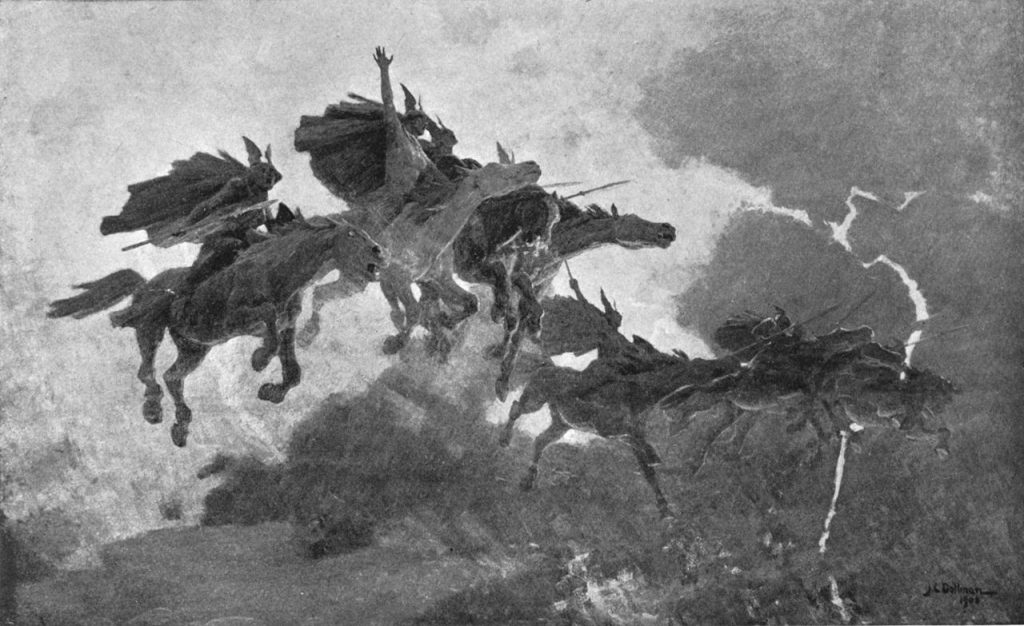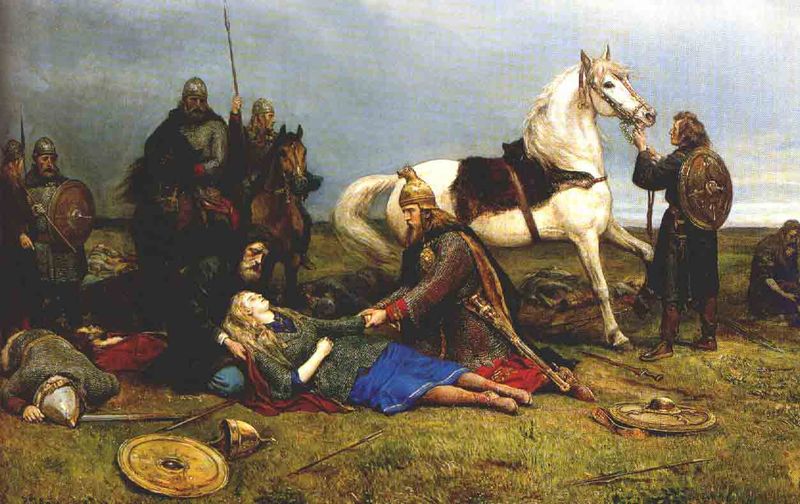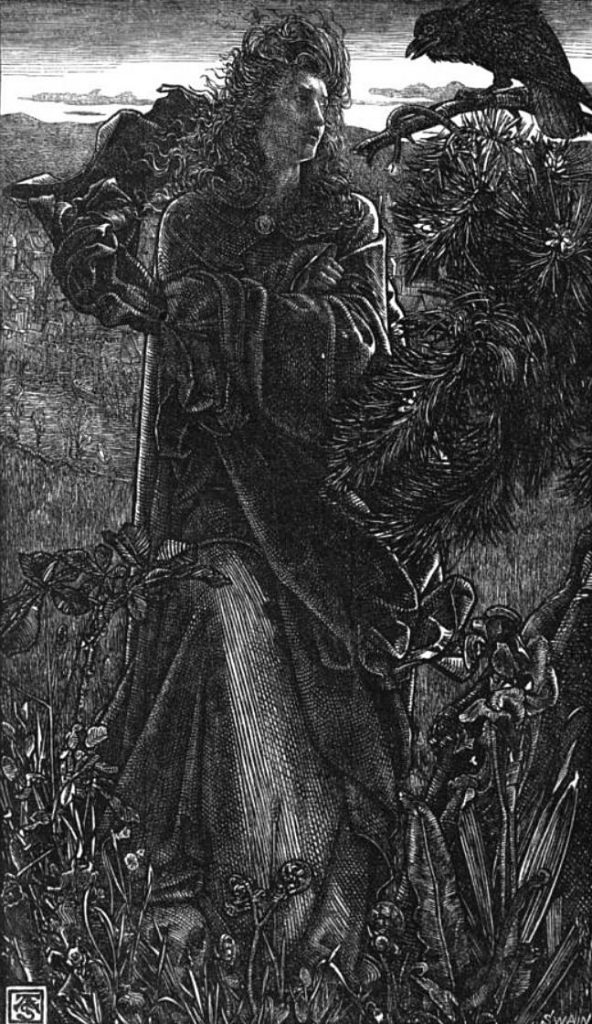The mystery of shieldmaidens. Posted by hulda on Oct 3, 2012 in Icelandic history
“…no living man am I! You look upon a woman. Éowyn I am, Éomund’s daughter. You stand between me and my lord and kin. Begone, if you be not deathless! For living or dark undead, I will smite you, if you touch him.”
~Éowyn, battle of Pelennor fields, J.R.R. Tolkien
It’s perhaps hard to say exactly what the skjaldmeyjar, shieldmaidens, were. Some would add that it’s not even known whether they ever existed at all, which is partially true. The usual story would describe them as unmarried women, likely from a noble family, very likely of one with only daughters and one of them acting as a son. If they married they would never return to being shieldmaidens again.
Shieldmaidens are found in historical texts but the writer may not always be completely trustworthy, or the text may be partially or completely a legendary type of saga, in which case it’s a little too full of dragons, zombies etc. to be taken seriously. Still, some grave finds would suggest that for one reason or another women were sometimes buried with weapons, just like men were, and that sometimes they did choose to take up the sword. Take the legend of a Danish noblewoman called Ladgerda for example: she and some fellow noble-ladies were in grave danger of getting gang raped, and to avoid this fate they donned men’s clothing and fled – or fought, like Ladgerda.
Hervör’s death – sorry about the spoiler. Tolkien was very much influenced by her story when he wrote his Lord of the Rings trilogy.
Some, like Hervör, went even further. According to her story in Hervarar saga ok Heiðreks she had no real pressing need to become a shieldmaiden, she chose it of her own free will*. She went as far as to necromance her dead father up from his tomb and then force the corpse to hand over its sword and her genes were so feisty that her granddaughter – also by the name Hervör – became just like her and eventually fell in the battlefield. And then there were women like Brynhildr of Völsunga saga who were Valkyrja of origin, Valkyries.
No doubt Valkyries were a great source of influence for the people writing the sagas of shieldmaidens. Interestingly enough the Valkyries themselves aren’t described as taking active part in a fight. Instead they’re the ones who fly to the battlefields after the war is over, flanked by their raven friends. They select the best of the fallen and carry them off to their lady Valfreya/Freya who chooses half of the men for herself. The other half continues to Óðinn’s place.
However, the shieldmaidens indeed took part in wars, some of them in a rather showy manner. Ladgerda even fought with her long hair open just to showcase her gender. In the Battle of Dorostolon several women fought among the men, some only found out afterwards as the victorious side had a closer look at the corpses. In the Battle of Brávellir hundreds of women fought on Haraldr hilditönn‘s side, one even acting as his banner bearer, at least as far as the author Saxo Grammaticus is to be believed. Even some notes from the Middle-East know to tell that the Christian armies employed female warriors. These accounts have been challenged, though, since both sides of the crusade wars more or less frowned upon women fighting among men. However, one could also speculate that had there been females on the battlefield it would have been on the Christians’ best interest (in their own opinion, that is) to hush that fact up as well as they could.
Icelandic sagas mention female fighters as well**. Remember Auður of Laxdæla saga who donned trousers and attempted to murder her former husband because he tarnished her name? She’s not alone either: her namesake Auður from Gísla saga Súrssonar, wife of Gísli, defends him against several armed men. Afterwards Gísli’s sister, Þórdís, takes Gísli’s sword from his murderer and attempts to run him through with it (she fails but still manages to wound him badly). Despite the law books stating that women were not allowed to bear a weapon it would seem that they still knew how to use one if need be, so perhaps the legends of shieldmaidens indeed are based on real examples of the past – who knows.
*And of her foul character, adds the author of her saga. Hervör was known to be a bit of a handful***:
“Hún fæddist upp með jarli ok var sterk sem karlar, ok þegar hún mátti sér nokkut, tamdist hún meir við skot ok skjöld ok sverð en við sauma. Hún gerði ok optar illt en gott, ok er henni var þat bannat, hljóp hún á skóga ok drap menn til fjár sér. ”
“She grew up at the jarl’s place and was strong like men, and when she could do something for herself, she practiced more with arrow, shield and sword than sewing. She did more often bad things than good things, and when she was forbidden, she ran into forest and killed men for their money.”
**Even a real shieldmaiden gets a mention in Ágrip Jökuldæla sögu. Unfortunately she chases swans until she bursts, while the hero of the story is busy dueling.
***Although in my opinion no one’s quite as bad as Brynhildr, who herself killed the 3-year old son of the love of her life, Sigurðr, after first plotting Sigurðr’s murder.

Build vocabulary, practice pronunciation, and more with Transparent Language Online. Available anytime, anywhere, on any device.
About the Author: hulda
Hi, I'm Hulda, originally Finnish but now living in the suburbs of Reykjavík. I'm here to help you in any way I can if you're considering learning Icelandic. Nice to meet you!







Comments:
Sunna Furstenau:
Great post, Hulda. Thank you!
hulda:
@Sunna Furstenau Happy to serve! 🙂